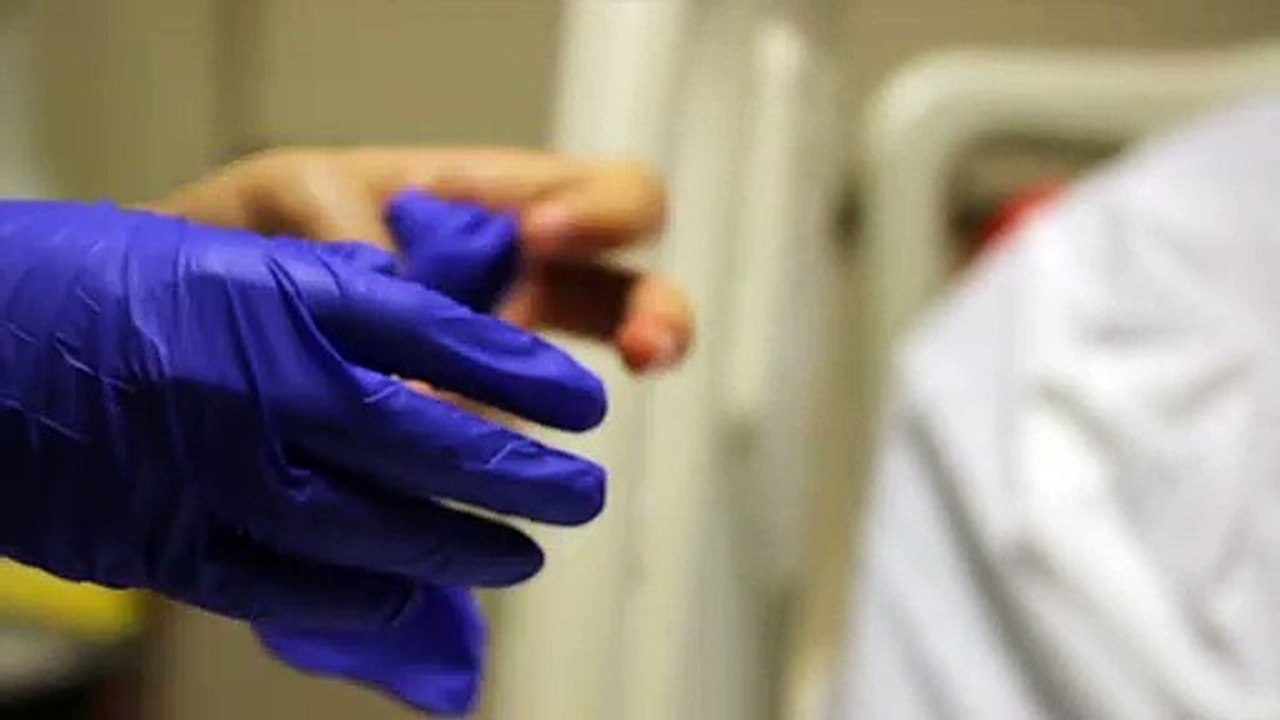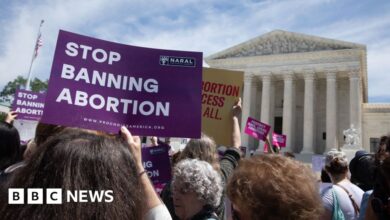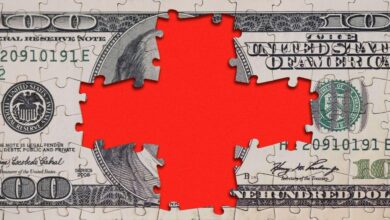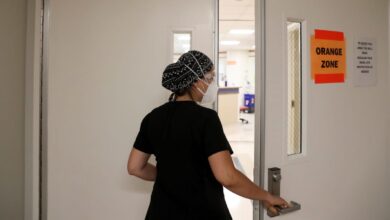
HHS Updated Provider Conscience Rule Rolls Back Trump Policy
HHS updated provider conscience rule rolls back Trump policy – that headline alone sparks a whirlwind of debate! This significant shift in healthcare policy, spearheaded by the Biden administration, directly reverses key elements of the Trump-era rule protecting healthcare providers’ conscience rights. We’re diving deep into the details, exploring the changes, the impact on patient access, the ethical dilemmas involved, and the ongoing political firestorm this decision has ignited.
From the initial rationale behind the Trump administration’s rule to the legal arguments justifying the Biden administration’s revisions, we’ll unpack the complexities. We’ll examine how this affects access to services like contraception and abortion, considering both sides of the religious freedom argument. We’ll also look at the potential consequences for healthcare providers and patients alike, using real-world scenarios to illustrate the far-reaching implications of this controversial policy shift.
The Trump Administration’s Provider Conscience Rule

Source: dmcdn.net
The Trump administration’s Provider Conscience Rule, officially titled “Protecting Statutory Conscience Rights in Healthcare,” aimed to significantly broaden the scope of conscience protections for healthcare providers who object to participating in certain medical procedures on religious or moral grounds. This rule, finalized in 2020, generated considerable controversy and legal challenges, ultimately being revised under the Biden administration.
Key Provisions of the Trump Rule
The rule expanded the definition of “conscience” to encompass a broader range of beliefs and objections, including those related to abortion, sterilization, assisted suicide, and gender transition procedures. It sought to prevent discrimination against healthcare providers who refused to participate in these procedures based on their sincerely held moral or religious beliefs. Key provisions included protections against coercion, retaliation, and discrimination, extending these protections to individuals, not just institutions.
The rule also established a process for providers to assert their conscience rights and seek redress for violations.
Rationale Behind the Rule
The Trump administration argued that the rule was necessary to protect the religious freedom and conscience rights of healthcare providers, aligning with its broader agenda emphasizing religious liberty. They asserted that previous regulations inadequately protected providers from being forced to participate in procedures that violated their deeply held moral or religious convictions. The administration maintained that the rule would not negatively impact patient access to care, as it allowed for robust mechanisms to ensure patients could still receive necessary services.
Supporting Groups and Stakeholders
The rule enjoyed strong support from numerous religious organizations, conservative advocacy groups, and individual healthcare providers who held strong objections to specific medical procedures. These groups argued that the rule was vital to upholding religious freedom and preventing the erosion of conscience rights within the healthcare system. Support also came from some physicians and healthcare professionals who believed the rule protected their right to practice medicine according to their personal beliefs.
Comparison of the Trump Rule with Previous Regulations
The following table compares and contrasts the Trump rule with previous regulations concerning healthcare providers’ conscience rights. Note that the interpretation and application of these regulations have been subject to ongoing legal and political debate.
| Provision | Trump Rule | Previous Regulations | Impact |
|---|---|---|---|
| Definition of Conscience | Broadened to include a wider range of moral and religious objections. | Narrower definition, focusing primarily on abortion. | Significantly expanded the scope of potential exemptions. |
| Scope of Protection | Extended to individuals and institutions; protected against coercion, retaliation, and discrimination. | Varied depending on the specific regulation; generally less comprehensive protection. | Increased the potential for providers to assert their conscience rights. |
| Enforcement Mechanisms | Established a process for providers to file complaints and seek redress for violations. | Enforcement mechanisms varied; often relied on complaint processes with limited oversight. | Created a more formalized system for addressing alleged violations. |
| Impact on Patient Access | Administration argued minimal impact, citing mechanisms to ensure continued access to care. | Opponents argued previous regulations adequately balanced provider rights and patient access. | Subject to ongoing debate and legal challenges. |
The Biden Administration’s Changes

Source: qtxasset.com
The Biden administration’s revised Provider Conscience Rule significantly alters the landscape of healthcare provider rights regarding religiously-based objections to certain medical procedures. This rule, replacing the Trump-era version, aims to strike a balance between protecting religious freedom and ensuring patient access to essential healthcare services. The changes are substantial and have sparked considerable debate within the medical and legal communities.The core difference lies in the interpretation and application of the Religious Freedom Restoration Act (RFRA).
While both administrations invoked RFRA, they differed greatly in how they defined “substantial burden” on religious exercise and the level of protection afforded to providers. The Biden administration’s rule emphasizes a stricter standard for demonstrating substantial burden, requiring providers to show a direct and significant infringement on their sincerely held religious beliefs. This contrasts sharply with the Trump administration’s broader interpretation, which arguably lowered the threshold for claiming religious exemption.
Specific Changes Implemented by the Biden Administration
The Biden administration’s rule clarifies and narrows the scope of permissible conscience exemptions. It strengthens the requirement for providers to demonstrate a direct and substantial burden on their religious exercise, moving away from a more permissive approach. The rule also reinforces the obligation of healthcare facilities to ensure patient access to legally permissible services, regardless of individual provider objections.
Specific changes include revised definitions of key terms like “conscience,” “religious belief,” and “substantial burden,” leading to a more precise and legally defensible framework. This stricter interpretation aims to prevent the misuse of conscience exemptions to deny patients access to essential healthcare services. Furthermore, the rule incorporates stronger enforcement mechanisms and clarifies the process for filing complaints and resolving disputes.
Comparison of Trump and Biden Rules
| Feature | Trump Administration Rule | Biden Administration Rule |
|---|---|---|
| Definition of “Substantial Burden” | Broader interpretation, lower threshold for exemption | Narrower interpretation, higher threshold for exemption, requiring direct and substantial infringement |
| Scope of Exemptions | Wider range of services potentially subject to exemption | More limited scope of exemptions, focusing on direct and substantial burden on religious exercise |
| Enforcement Mechanisms | Less robust enforcement mechanisms | Stronger enforcement mechanisms and clearer complaint resolution processes |
| Patient Access to Care | Less emphasis on ensuring patient access | Stronger emphasis on ensuring patient access to legally permissible services |
Legal Arguments for the Modifications, Hhs updated provider conscience rule rolls back trump policy
The Biden administration’s justification rests on the argument that the Trump rule overly broadened the scope of religious exemptions, potentially leading to discrimination against patients and hindering access to critical healthcare services. They argue that a stricter interpretation of RFRA is necessary to balance religious freedom with the fundamental right to healthcare. The administration’s legal team likely emphasized that the previous rule did not adequately consider the potential harm to patients resulting from the unrestricted application of conscience exemptions.
The revised rule aims to provide a more balanced approach, better protecting both religious freedom and patient access to care. This is supported by citing numerous legal precedents related to RFRA and the balancing of competing interests in healthcare settings.
Impact on Healthcare Providers
The changes will likely affect healthcare providers in several ways. For example, providers who previously relied on the broader interpretation of the Trump rule to refuse participation in certain procedures may find it more difficult to claim exemption under the stricter Biden rule. This could lead to increased legal challenges and potential liability for providers who continue to deny services based on religious objections.
Conversely, healthcare facilities may face increased pressure to ensure access to services, potentially requiring them to implement new policies and procedures to accommodate both provider conscience claims and patient needs. A hypothetical example would be a hospital having to ensure access to abortion services even if some staff members object on religious grounds. The hospital would need to find alternative arrangements to fulfill its legal obligations to provide such services.
Impact on Access to Healthcare Services: Hhs Updated Provider Conscience Rule Rolls Back Trump Policy

Source: dreamstime.com
The HHS’s updated provider conscience rule reversing the Trump-era policy is a significant shift, impacting healthcare access for many. It’s crucial to remember that even seemingly minor health issues can have serious consequences; for example, understanding the risk factors that make stroke more dangerous is vital for preventative care. Ultimately, the HHS rule’s implications extend far beyond individual conscience, influencing broader health outcomes and access to necessary care.
The updated HHS Provider Conscience Rule, rolling back aspects of the Trump-era policy, has sparked considerable debate regarding its impact on access to healthcare services. While proponents argue it protects religious freedom, critics worry it will restrict access to essential care, particularly for vulnerable populations. The potential consequences are complex and far-reaching, affecting both patients and providers.The changes introduced by the Biden administration aim to clarify and refine the scope of conscience protections, seeking to balance religious freedom with the need for equitable access to healthcare.
However, the practical implications remain a significant concern. The potential effects on access to specific services, the experiences of patients seeking care, and the willingness of healthcare providers to offer those services all warrant careful consideration.
Access to Contraception and Abortion Services
The rule’s impact on access to contraception and abortion is a central point of contention. The potential for increased restrictions on providers who object to these services on religious or moral grounds could lead to fewer facilities offering them, particularly in areas already underserved. This could force patients to travel longer distances, face increased costs, or experience delays in receiving necessary care.
For individuals in rural areas or those with limited financial resources, these barriers could be insurmountable, resulting in a significant reduction in access to these vital services. This could disproportionately affect low-income women and those in marginalized communities. For example, a woman living in a rural county with only one clinic, and that clinic’s doctor refusing to provide contraception due to religious objections, would be forced to travel considerable distances or forgo necessary healthcare.
Consequences for Patients Seeking Services
Patients seeking contraception, abortion, or other services potentially affected by the rule may face several challenges. These include increased wait times for appointments, difficulty finding providers willing to offer the services, higher costs due to travel or the need to seek care from out-of-network providers, and emotional distress associated with navigating a more restrictive healthcare system. The lack of access could lead to delayed or forgone care, resulting in negative health outcomes.
Consider a scenario where a young woman requires emergency contraception after a sexual assault; a delay in receiving this care due to a lack of readily available providers could have serious consequences for her reproductive health.
Healthcare Providers’ Willingness to Provide Services
The updated rule aims to balance religious freedom with patient access. However, the extent to which providers feel empowered to exercise conscience objections, and the clarity of the guidelines governing these objections, will significantly influence their willingness to provide services covered by the rule. Some providers might feel more emboldened to refuse services, while others might seek clarification to ensure compliance.
This uncertainty could lead to inconsistencies in care across different healthcare settings and regions. The resulting variability in access could further exacerbate existing health disparities. For example, a hospital system in a conservative state might see a greater number of providers opting out of providing certain reproductive health services compared to a hospital system in a more liberal state.
Scenario: Impact on a Patient Seeking Abortion
Imagine Sarah, a 20-year-old college student living in a rural area, who discovers she is pregnant and wishes to have an abortion. Under the updated rule, she may find that the nearest clinic offering abortion services is a significant distance away, requiring extensive travel and significant expense. Furthermore, if the clinic is already overburdened due to the reduced number of providers offering abortion services, she might experience considerable delays in receiving care, potentially impacting her physical and mental well-being.
This scenario highlights the potential for the rule to create significant barriers to accessing time-sensitive healthcare services for women in underserved communities.
Religious Freedom and the Provider Conscience Rule
The debate surrounding the HHS Provider Conscience Rule is deeply intertwined with the complex issue of religious freedom in the context of healthcare. This rule, and its subsequent modifications, have ignited passionate arguments from both sides, highlighting the inherent tensions between individual beliefs and the provision of comprehensive healthcare services. Understanding the various perspectives and the legal precedents involved is crucial to navigating this contentious area.
Arguments Supporting the Rule Based on Religious Freedom
Supporters of the rule, often including religious organizations and individuals, argue that it protects the fundamental right to religious freedom guaranteed by the First Amendment. They contend that healthcare providers, particularly those with deeply held religious beliefs, should not be compelled to participate in medical procedures that violate their conscience, such as abortion, sterilization, or gender-affirming care. Their argument rests on the principle that forcing individuals to act against their sincerely held religious beliefs constitutes a violation of their freedom of conscience and religious exercise.
This protection, they maintain, is essential to safeguarding religious liberty in a pluralistic society. They often cite examples of providers facing significant personal and professional consequences for refusing to participate in procedures they deem morally objectionable.
Arguments Opposing the Rule Based on Religious Freedom
Conversely, opponents of the rule argue that it disproportionately harms vulnerable populations by limiting access to essential healthcare services. They contend that while religious freedom is a fundamental right, it should not be used to justify discrimination against patients based on their sexual orientation, gender identity, or reproductive choices. The concern is that the rule allows providers to refuse care based on personal beliefs, creating significant barriers to accessing vital medical services, particularly for marginalized communities.
They emphasize that healthcare is a fundamental right, and restrictions based on providers’ religious objections undermine this right for patients. Furthermore, they argue that the rule could lead to a patchwork of healthcare access, depending on the religious beliefs of individual providers.
Differing Approaches of Religious Organizations
Different religious organizations have taken varied approaches to the issue of conscience rights. Some religiously affiliated healthcare institutions have strongly supported the rule, emphasizing the importance of protecting the religious freedom of their employees. Others, while acknowledging the importance of religious freedom, have expressed concerns about the potential negative impact on patient care and access. The diversity of views reflects the complexity of the issue and the wide range of interpretations of religious doctrine regarding healthcare provision.
Some organizations have focused on internal policies to balance religious freedom with ethical obligations to patients, while others have actively engaged in legal challenges to the rule.
Key Court Cases Addressing Religious Freedom in Healthcare
Several landmark court cases have shaped the legal landscape surrounding religious freedom in healthcare. These cases, often involving challenges to state or federal laws or regulations, have grappled with the balance between religious freedom and the provision of healthcare services. A thorough analysis of these cases reveals the evolution of legal interpretations and the ongoing debate about the scope of religious exemptions in healthcare settings.
Examples include cases addressing conscientious objection to abortion, mandatory vaccinations, and end-of-life care. The outcomes of these cases have had significant implications for the Provider Conscience Rule and similar regulations.
The HHS’s updated provider conscience rule reversing the Trump-era policy has sparked debate, but one thing’s certain: healthcare needs efficient administration. This is where advancements like the ai powered solution to the medical coding worker shortage become crucial, streamlining processes and freeing up staff to focus on patient care. Ultimately, both policy changes and technological improvements aim to improve the overall healthcare system, hopefully leading to better outcomes for everyone.
Ethical Considerations and Implications
The HHS updated Provider Conscience Rule, while aiming to protect religious freedom, presents complex ethical dilemmas with significant implications for healthcare access and provider autonomy. The central conflict lies in balancing the deeply held beliefs of healthcare providers with the fundamental right of patients to receive comprehensive medical care, including services that may conflict with those beliefs. This necessitates a careful examination of competing values and the potential real-world consequences of the rule’s implementation.
Competing Values in the Debate
The debate surrounding the Provider Conscience Rule highlights a clash between several fundamental values. Religious freedom, a constitutionally protected right, is central to the arguments in favor of the rule. Proponents argue that forcing healthcare providers to participate in procedures that violate their deeply held religious beliefs infringes upon this fundamental freedom. Conversely, the principle of patient access to healthcare services is paramount.
Opponents argue that the rule could restrict access to essential care, particularly for vulnerable populations who rely on a wide range of healthcare providers. Finally, provider autonomy, the right of healthcare professionals to make independent clinical judgments, is also implicated. While providers should not be forced to act against their conscience, the rule’s potential to limit patient choice raises questions about the extent of this autonomy.
Real-World Scenarios Illustrating Ethical Dilemmas
Consider a scenario involving a religiously-affiliated hospital refusing to provide contraception services to a patient, citing the updated rule. This action raises concerns about the patient’s reproductive rights and access to essential healthcare. Another example might be an obstetrician who refuses to perform a medically necessary abortion, even if the patient’s life is at risk. This situation highlights the potential conflict between religious beliefs and the physician’s professional obligation to provide life-saving care.
The rule’s impact could be particularly acute in areas with limited healthcare providers, potentially creating significant barriers to care for marginalized communities.
Ethical Frameworks and Differing Conclusions
Different ethical frameworks can lead to drastically different conclusions regarding the rule’s merits. A deontological approach, emphasizing duty and adherence to moral rules, might prioritize the provider’s right to conscientious objection, even if it leads to restricted patient access. Conversely, a consequentialist framework would focus on the overall consequences of the rule, weighing the potential harm to patients against the protection of religious freedom.
Utilitarianism, a type of consequentialism, might suggest that the rule is justifiable only if the overall benefit (protecting religious freedom) outweighs the harm (restricted access to care). A virtue ethics approach would focus on the character and moral virtues of the individuals involved, emphasizing compassion, integrity, and respect for both patient autonomy and provider conscience. The application of these different frameworks reveals the inherent complexities and lack of easy answers in this ethical debate.
The HHS updated provider conscience rule, rolling back Trump-era restrictions, has sparked debate about healthcare access. This comes at a time when, according to this article on the closures, hshs prevea close wisconsin hospitals health centers , raising concerns about the impact on underserved communities. Ultimately, the new HHS rule’s effects on hospital availability and patient care remain to be seen.
Political and Social Reactions
The updated HHS Provider Conscience Rule, rolling back aspects of the Trump-era policy, ignited a firestorm of political and social reactions, revealing deep divisions within American society on issues of religious freedom, healthcare access, and the role of government in regulating medical practices. The debate wasn’t simply a clash of ideologies; it involved deeply held beliefs about individual liberties, patient rights, and the ethical responsibilities of healthcare providers.The rule’s revision sparked immediate and intense responses across the political spectrum.
Conservative groups and religious organizations largely condemned the changes, arguing that they infringed upon the religious freedom of healthcare providers and threatened their ability to conscientiously object to procedures they found morally objectionable. Conversely, liberal groups and pro-choice organizations largely praised the Biden administration’s modifications, contending that the original rule created barriers to essential healthcare services, particularly for vulnerable populations, and disproportionately affected women seeking reproductive healthcare.
Reactions of Various Political Groups
Republican lawmakers largely criticized the updated rule, viewing it as an overreach by the federal government and a threat to religious freedom. Many echoed concerns raised by religious organizations about the potential for providers to face legal repercussions for refusing to participate in procedures that violated their conscience. Conversely, Democratic lawmakers largely supported the changes, emphasizing the importance of ensuring access to comprehensive healthcare services, regardless of a provider’s personal beliefs.
They argued that the previous rule created undue burdens on patients and limited their access to care. The political debate frequently framed the issue as a conflict between religious freedom and access to healthcare, with each side emphasizing their respective priorities.
Public Discourse and Arguments
Public discourse surrounding the rule was highly polarized, mirroring the broader political divisions in the United States. Proponents of the revised rule highlighted the potential for discrimination against marginalized groups, particularly women and LGBTQ+ individuals, under the Trump-era policy. They emphasized the importance of patient autonomy and the right to access a full range of healthcare services without facing unnecessary barriers.
Opponents, on the other hand, argued that the revised rule undermined the religious freedom of healthcare providers and forced them to participate in procedures that violated their deeply held moral or religious beliefs. This often involved appeals to religious liberty arguments, emphasizing the right of individuals to act according to their conscience without government coercion.
The Role of Media Coverage
Media coverage played a significant role in shaping public opinion on the updated rule. News outlets often framed the debate in terms of competing narratives, highlighting the arguments of both sides. However, the framing and emphasis given to different aspects of the debate varied considerably across different news organizations, reflecting their own political leanings and editorial stances. This led to a fragmented public discourse, with different segments of the population receiving contrasting information and interpretations of the rule’s implications.
The resulting lack of consensus made it difficult to gauge the true impact of the rule on public opinion.
Timeline of Key Events
- May 2019: The Trump administration’s Provider Conscience Rule is finalized.
- November 2020: Joe Biden wins the presidential election, campaigning on a platform of expanding access to healthcare.
- January 2021: President Biden takes office.
- December 2021: The Biden administration announces its intention to revise the Provider Conscience Rule.
- [Insert Date]: The revised rule is published and takes effect (Insert actual date here).
- [Insert Date]: Legal challenges to the revised rule are filed (Insert actual date if applicable).
- [Insert Date]: Court rulings on the legal challenges (Insert actual date and brief summary of ruling if applicable).
Final Thoughts
The HHS updated provider conscience rule’s rollback of the Trump-era policy is far more than just a legal change; it’s a seismic shift in the ongoing debate about religious freedom, patient access, and healthcare provider autonomy. The implications are vast and multifaceted, impacting not only healthcare providers but also the patients who rely on their services. The coming months and years will undoubtedly see continued legal challenges, political maneuvering, and intense public discourse as the dust settles on this landmark decision.
The core question remains: how do we balance deeply held religious beliefs with the fundamental right to healthcare for all?
Quick FAQs
What specific services are most affected by this rule change?
The rule change significantly impacts access to services like contraception, abortion, and potentially other reproductive health services. The exact impact will vary depending on state laws and individual provider interpretations.
What are the potential legal challenges to the new rule?
Several legal challenges are anticipated, focusing on arguments around religious freedom, patient access, and the legality of the Biden administration’s interpretation of existing law. The outcome of these challenges will significantly shape the long-term effects of the rule.
How does this rule affect healthcare providers who object to providing certain services on moral or religious grounds?
The new rule aims to narrow the scope of conscience exemptions, potentially leading to increased pressure on providers who object to performing certain procedures. The extent of this pressure will depend on the specifics of the provider’s situation and the legal interpretations of the rule.
What is the role of state laws in this issue?
State laws play a crucial role, as some states have already enacted legislation protecting or restricting provider conscience rights. These state laws will interact with the federal rule, creating a complex and potentially conflicting legal landscape.





